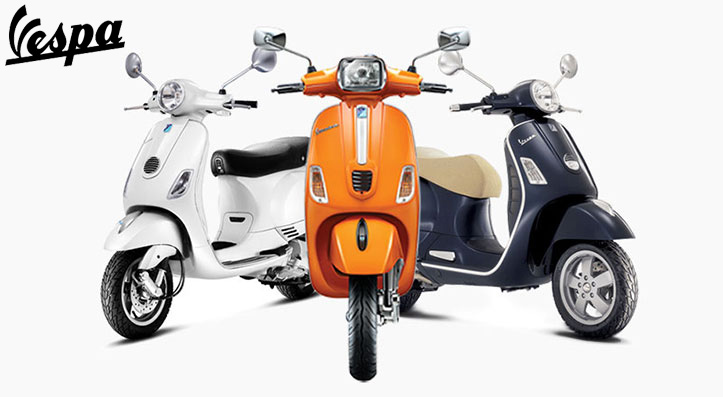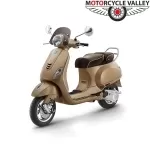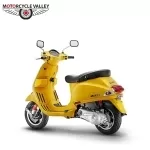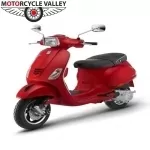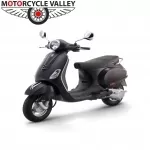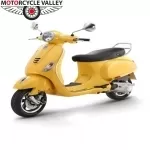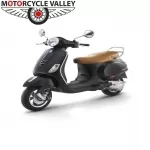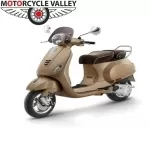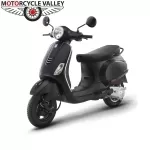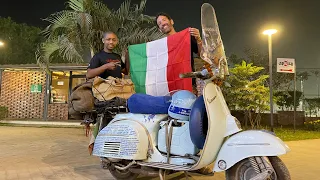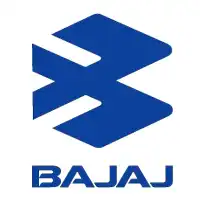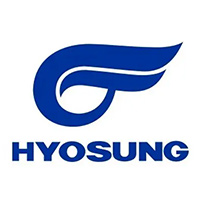
Vespa Bike Price in BD 2025
Vespa Bike price in BD 2025
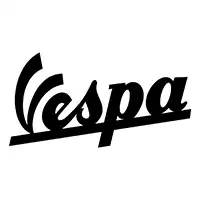
| S.N. | Bike Name | Engine CC | Price in Bangladesh | |
|---|---|---|---|---|
| 1 | Vespa Elegante VXL 150 | 154.8cc | Tk. 232000 | Details |
| 2 | Vespa Elegante VXL 150 ABS | 154.8cc | Tk. 245000 | Details |
| 3 | Vespa LX 125 | 125cc | Tk. 179000 | Details |
| 4 | Vespa Notte 125 | 125cc | Tk. 179000 | Details |
| 5 | Vespa SXL 125-CBS | 125cc | Tk. 253200 | Details |
| 6 | Vespa SXL 150 | 154.8cc | Tk. 313300 | Details |
| 7 | Vespa VXL 125 | 125cc | Tk. 298000 | Details |
| 8 | Vespa VXL 150 | 154.8cc | Tk. 314600 | Details |
Vespa Bikes (Presently Not Available)

| Bike Name | Engine CC | |
|---|---|---|
| VESPA SXL 125-WHITE-CBS | 124.45cc | View Details |
| VESPA SXL 150-BLUE-ABS | 149.5cc | View Details |
| VESPA-VXL-150CC-YELLOW-ABS | 149.5cc | View Details |
Vespa News

2023-09-04
Since the arrival of scooters in the motorcycle market of Bangladesh, the scooter that has gained the most recognition is the ...
English
Bangla
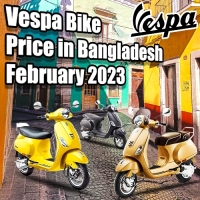
2023-02-13
Vespa is a high-end Italian scooter and moped brand made by Piaggio. The name translates to "wasp" in Italian. This brand star...
English
Bangla

2023-09-04

2023-02-13
Vespa Bike Reviews
2021-08-09
We all want the bike that I will buy to be unique. Because if something is unique, people are more attracted to it. Just like same...
English Bangla
2021-05-08
In modern era scooters are high in demand. For smooth and hassle free city riding, scooter provides the best feeling. Most of th...
English Bangla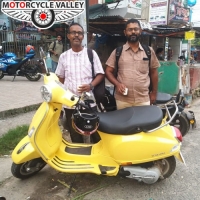
2021-08-09
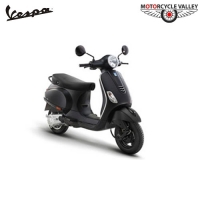
2021-05-08
Latest Video of Vespa
Vespa Showrooms Bangladesh
About Vespa
The Vespa story begins in the aftermath of WW II in Italy. The new Vespa scooter took off like wildfire across Europe. In 1956, only 11 years after it was created, Piaggio sold its 1 millionth Vespa. A Vespa culture had emerged. Not only was it a transportation but a hobby. Now a new generation of Americans are discovering the great little wasp and reviving them too!
The first vehicle was created from spare aircraft parts that were actual pieces of landing gears from Mussolini’s airplanes. It was designed by CorradinoD’Ascanio. Because of the unique design, especially the front handle bars, and its sound, it was named Vespa, the Italian word for wasp. After the Piaggio trademark was registered on 23 April 1946, and with over 18 million bikes zipping around roads in six continents, Vespa can truly lay claim to having changed the way the world gets around together, uniting young people in a shared passion, regardless of culture or background. Since 2004, when 58,000 vehicles were produced, the growth of the Vespa brand has been nothing short of spectacular. In 2006, that number was 100,000, increasing to 180,000 in 2017 and a record of over 210, 000 in 2018. In the past decade, more than 1.6 million Vespa’s have taken to the road, in every conceivable corner of the world. Today, more than ever, Vespa is a truly global brand and a veritable world citizen, with manufacturing sites in three countries. Pontedera in the heart of Tuscany, and Vespa’s home since 1946, is the production base for Europe and all western markets, including the Americas. The Far East is served by VinhPhuc in Vietnam, whilst the newest site in Baramati was opened in April 2012 to produce Vespa for the Indian market.
In terms of Bangladesh, Vespais officially available grabbing the hands of Runner automobiles. These world class products were not regularly available in Bangladesh, but Runner introduced a few models matching the Bangladeshi road conditions. Their price and performance are really appreciated by the users as well.
The first vehicle was created from spare aircraft parts that were actual pieces of landing gears from Mussolini’s airplanes. It was designed by CorradinoD’Ascanio. Because of the unique design, especially the front handle bars, and its sound, it was named Vespa, the Italian word for wasp. After the Piaggio trademark was registered on 23 April 1946, and with over 18 million bikes zipping around roads in six continents, Vespa can truly lay claim to having changed the way the world gets around together, uniting young people in a shared passion, regardless of culture or background. Since 2004, when 58,000 vehicles were produced, the growth of the Vespa brand has been nothing short of spectacular. In 2006, that number was 100,000, increasing to 180,000 in 2017 and a record of over 210, 000 in 2018. In the past decade, more than 1.6 million Vespa’s have taken to the road, in every conceivable corner of the world. Today, more than ever, Vespa is a truly global brand and a veritable world citizen, with manufacturing sites in three countries. Pontedera in the heart of Tuscany, and Vespa’s home since 1946, is the production base for Europe and all western markets, including the Americas. The Far East is served by VinhPhuc in Vietnam, whilst the newest site in Baramati was opened in April 2012 to produce Vespa for the Indian market.
In terms of Bangladesh, Vespais officially available grabbing the hands of Runner automobiles. These world class products were not regularly available in Bangladesh, but Runner introduced a few models matching the Bangladeshi road conditions. Their price and performance are really appreciated by the users as well.




